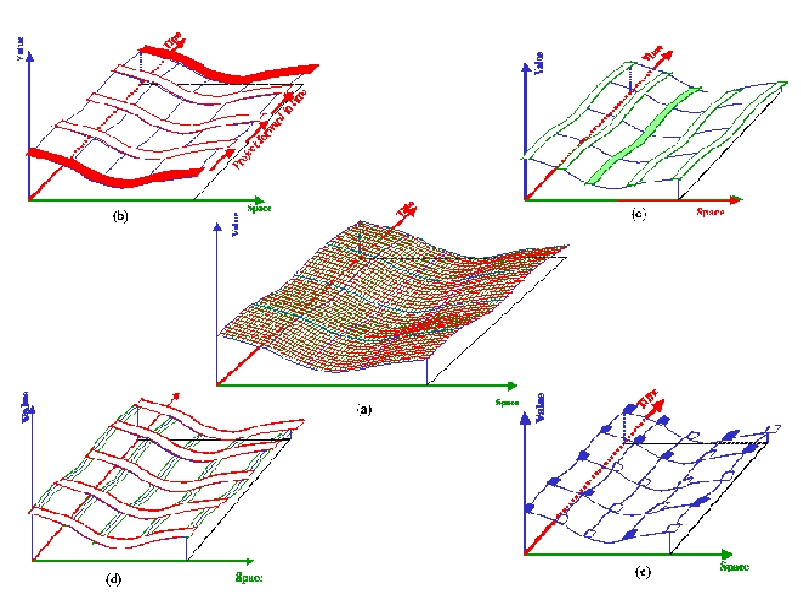|
It is conceptually straightforward to extend the
central idea of projective integration in time — which is to step
only a few ``observables'' on the long time scale, rather than
attempting to step forward all available quantities — to the spatial
domain. Substantial progress has been made in this area by Gear and
Kevrekidis, with particular emphasis on the conditions under which the
resulting PDE solver is stable and accurate. Kevrekidis and Gear
refer to the ``long space, short time'' scheme as ``gaptooth''
integration, and to the combination of space and time projective
integration techniques ( ``long space, long time'') as ``patch
dynamics''. It is instructive to illustrate how one might apply the
patch dynamics algorithm to a fusion problem. We consider the problem
of simulating a full tokamak cross section with kinetic electron and
electromagnetic dynamics for a few energy confinement times.
Detailed gyrokinetic analyses of existing experimental data have shown
that in ``interesting'' conditions (e.g., high β) one
typically finds small scale features associated with electron and
electromagnetic physics. As an example, a recent analysis of MAST
profiles found unstable tearing modes at radial scales of
approximately one ion gyroradius. It is not possible to resolve
structures at this scale in a full-torus simulation. Nor it is
possible to resolve Alfvén and electron transit time dynamics for a
simulation lasting a few energy confinement times. Instead, we will
consider calculating transport fluxes in a few annuli, with GS2
running on each space-time ``patch.''
GS2 simulations evolve distribution functions for each plasma
species in three spatial dimensions, energy, magnetic moment, and
time. For clarity, we illustrate the issues involved with a
two-dimensional poloidal cross-section. Rather than attempting to
simulate the entire cross-section, one selects a few flux surfaces.
An annular region is cut out around each (in magnetic coordinates),
reducing the size of the computational problem substantially.
For the transport problem, one can choose to simulate a flux-tube
rather than the full annulus. This corresponds to taking a small
region in the poloidal direction, and following the flux tube around
for one or more full poloidal circuits of the field line. These ideas
are currently fully implemented in GS2. The next step is to
couple many flux-tubes together, projectively integrating macroscopic
quantities forward in time. Such an approach is inherently highly
parallelizable, and represents a unique opportunity to build fully
kinetic transport modules that are accurate, stable and
parallelizable, and thus suitable for full device simulation.
|

